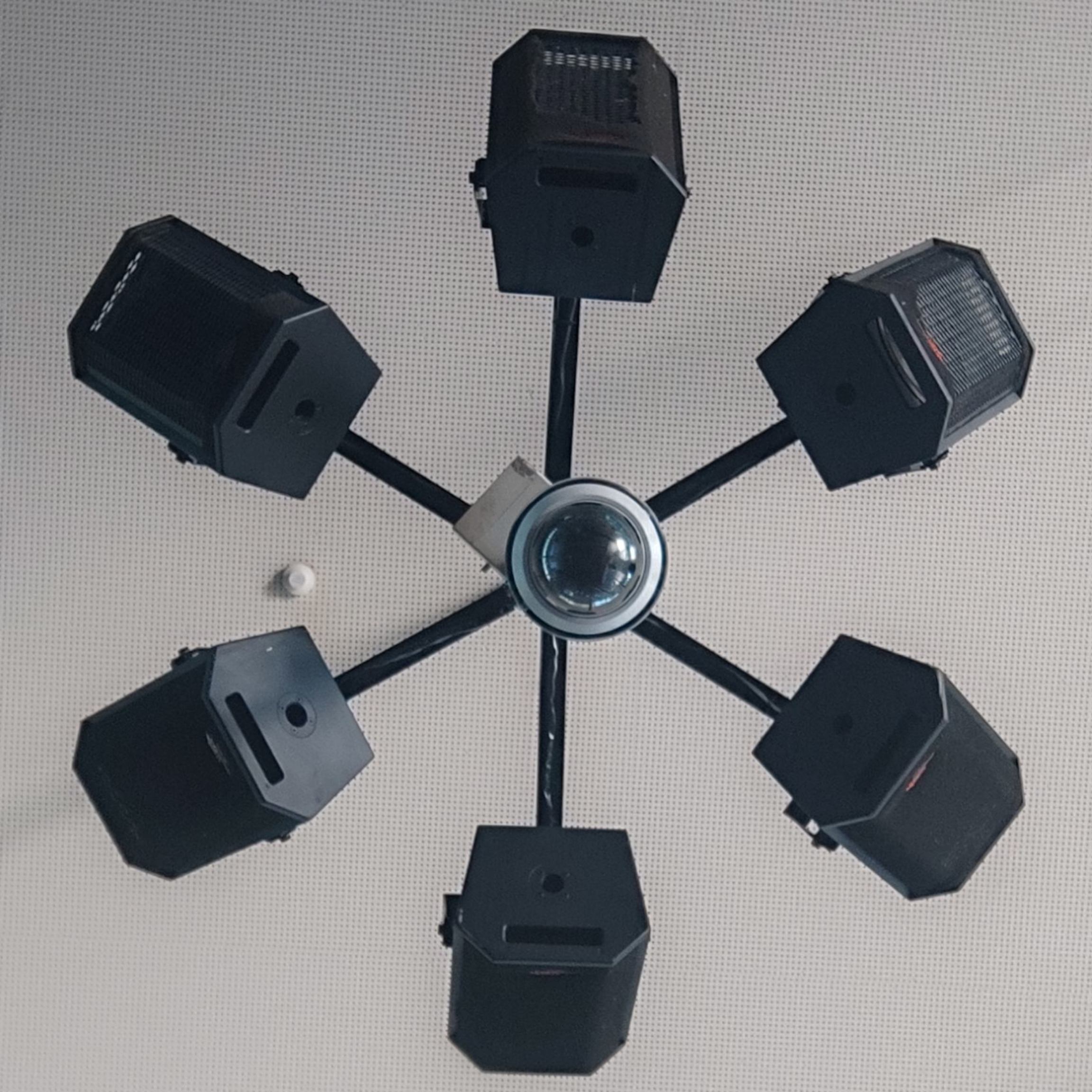Arch is aimed at people who know their shit so they can build their own distro based on how they imagine their distro to be. It is not a good distro for beginners and non power users, no matter how often you try to make your own repository, and how many GUI installers you make for it. There’s a good reason why there is no GUI installer in arch (aside from being able to load it into ram). That being that to use Arch, you need to have a basic understanding of the terminal. It is in no way hard to boot arch and type in archinstall. However, if you don’t even know how to do that, your experience in whatever distro, no matter how arch based it is or not, will only last until you have a dependency error or some utter and total Arch bullshit® happens on your system and you have to run to the forums because you don’t understand how a wiki works.
You want a bleeding edge distro? Use goddamn Opensuse Tumbleweed for all I care, it is on par with arch, and it has none of the arch stuff.
You have this one package that is only available on arch repos? Use goddamn flatpak and stop crying about flatpak being bloated, you probably don’t even know what bloat means if you can’t set up arch. And no, it dosent run worse. Those 0,0001 seconds don’t matter.
You really want arch so you can be cool? Read the goddamn 50 page install guide and set it up, then we’ll talk about those arch forks.
(Also, most arch forks that don’t use arch repos break the aur, so you don’t even have the one thing you want from arch)
I mean, I’m just one reference point, but here we go. I started with Kubuntu – I liked KDE, and Ubuntu is a stable, LTS distro. What could go wrong?
But my PC is Intel/Nvidia, so I’m constantly facing driver issues, and not to mention, snap is completely fucked. Ubuntu is supposed to be LTS but I’ve somehow still got 2-4 GB of updates every day or two. I’ve also got random bugs here and there and no real idea of how to troubleshoot them because the support is disparate or doesn’t address my specific issue.
Meanwhile, on my Chrultrabook, I decided to go with Arch, which of course presented its own set of issues. The archinstall script was straightforward, and debugging it was also fairly easy since the Arch wiki and forums were a trove of information. But debugging and tinkering, even when I accidentally bricked my laptop and had to do a clean slate (don’t ever interrupt pacman, I’ve learned!), has been a great learning experience. It’s made me feel like I actually understand a little more of what goes on under the hood. Ubuntu could do that as well, but it isn’t meant to be design.
Neither is good nor bad on its own, but different people enjoy different things. I didn’t think I would be the type to enjoy Arch, but it gave me valuable experience and a fun project (even if I did end up staying up until 3 or 4 AM on work nights). I’ve got EndeavourOS on my laptop now and still Kubuntu on my PC, but I’m wondering if I shouldn’t just switch over. Arch/eOS being a rolling release feels nice too, as I’m doing all these updates on Ubuntu anyway, but I’m slightly more worried about fucking something up.
I was not technically a newbie since I had previously used ubuntu in the distant past (as if ubuntu would truly prepare someone for a more advanced distro), and probably a few others I can’t remember, but I came back with EndeavourOS and I’m having a great time. I did have a few challenges though I am fairly tech savvy and I knew what I was getting into so I was definitely not a regular novice.
After a single serious oopsie that bricked my system but I was able to fix I’ve been running a very stable system. I’ve kept with it for nearly 2 years now on my initial install with practically no issues, at least none I wasn’t willing and able to solve. I troubleshot an issue I was having with a package installation the other day without finding any help online and that made me proud of myself.
I would have considered myself a decent power user on windows, and I feel like a sub average arch user, but hey I get to learn and improve more now.
Tbh I think endeavor os is a pretty nice beginner way to get into arch–it was my introduction to arch and the aur.
Any windows power user or dev on a mac can follow a wiki, read a bit and learn.
Good for beginners? I didn’t describe a beginner right here. Anybody with experience in computing will find arch straightforward and satisfying. Heck, a CS student would probably go through a first install process faster than I do after 5 years.
What are the concept involved? Partitioning, networking, booting… These are all familiar fields to tons of very normal computer users.
just because a given person could make it work, doesnt mean they want to. i personally can fix a lot of these issues, but i dont wanna have to bother. i just want to accomplish the inane bullshit i turned my computer on for.
i just think an arch recommendation should always come with that disclaimer. newbies have to know what to expect else they will associate that experience with linux in general.
The first Linux I used wasn’t part of any distro. A few years later I compiled Slackware to run bind and Sendmail.
Last year I tried Arch in a VM. I got to where it expected me to know what partitions to create for root and swap and noped out. It’s not 1996. I don’t have time for those details any more. No one should. Sane defaults have been in other distros for decades.
Debian welcomes you 💫
one of the main points of arch is for people wanting to learn these details. its not for everyone.
if you want a distro to just work, i second the suggestion from the other dude. get a debian based one.
Arch was my first distro after going back to Linux. I really liked learning the inner workings of a computer and an OS.
I know plenty of people who just want a plug&play experience with the only input for the install being name, password and date. For them, I would never recommend Arch, simply mint or pop_os would do just fine as the only thing the computer has to do is open up the browser.
I just want more Linux users, not specific distros. In the end if you know your way around Linux, the distro choice doesn’t matter, you just choose a package repo
I agree. There are only two types of distribution, rock solid plug n play and hobbyist/pro .
macOS is my daily driver, but I am a self hosting hobbyist (a bad one) and the moment you become involved with the command line of a multi user operating system, you need a level of skill, curiosity and patience that 99% of people don’t have and don’t want.
Even following ‘beginner’ tutorials is hit or miss, because of the different distros, assumptions, pre requisites, repositories, and so on.
I am a hobbyist, and I don’t mind digging around, but there are several times where I’ve put in a hour or more on what would be a 5 minute job for someone who was fluent - and even then sometimes I’ve got nothing to show for that hour.
Even following ‘beginner’ tutorials is hit or miss
It’s gotten worse than it even used to be, because more than half the “tutorials” I’ve run across are clearly AI written and basically flat out wrong.
Of course, they’re ALSO the “answers” that get pushed by Bing/Google so even if you run into someone who is willing to follow documentation, they’re going to get served worthless slop.
One thing I will give arch is that if there’s a wiki entry for something, it’s at least written by a human and is actually accurate which is more than I’ve found ANYWHERE else.
You’re focusing too much on the installation process, if installing Arch was the whole of the problem things like Endeavor would be a good recommendation for newbies, but they’re not. Arch has one giant flaw when it comes to being beginner friendly, and it’s part of what makes it desirable for lots of us, and that is the bleeding edge rolling release model. As a newcomer you probably want something that works and is stable. Arch is not, and will never be, that, because the core philosophy is to be bleeding edge rolling release. If you’re a newcomer who WANTS to have that and doesn’t mind the learning curve then go ahead, but Linux has enough of a learning curve already, so it’s better to get people started with something they can rely on and afterwards they can move to other stuff that might have different advantages/disadvantages.
We’re talking about the general case here, I’ve recommend Arch to a newcomer in the past, he was very keen on learning and was happy with reading wikis to get there stuff sorted, but realistically most people who’re learning a whole new OS don’t want to ask questions and be told RTFM, and RTFM is core to the Arch philosophy.
the wiki could be way better honestly…
Only gets better if we make it better.
that, or having good documentation could be a requirement
deleted by creator
Mamma says you’re ornery bcz you have all them teeth and no toothbrush.
I never see Fedora recommended enough, but it’s really good for beginners. And by that I mean people new to computers, not just Linux. GNOME is a good looking by default, intuitive to use, simple DE.
it wasn’t my choice but i recently installed Fedora for a beginner. (They made their research, read about different distros and chose Fedora.) It was surprising to see how intuitive everything is. A beginner can indeed start using Fedora with no previous Linux experience.
By “beginner” i mean somebody who used one or some of these: windows, macos, ios and android. It’s especially easy, i think, for tablet users.
GNOME is explicitly what kept me exclusively on Windows for about a decade - and what made me gunshy about Android & iOS. It’s totally impossible to drive anything important, doing anything of value required a DOS prompt and arcane commands that had no relation to their exact counterpart in Windows, and it’s just utterly revolting to me.
Cinnamon is the only DE that made me feel comfortable daily driving Linux.
That’s really interesting, because I’ve had a very different experience. Almost anything I wanted to do could be done through a GUI, which looks pretty.
I’m not sure how Android and iOS relate, they are mobile OSs, and both have their flaws, although some more than others.
To go in reverse order: iOS & Android are related because they’re Linux/UNIX. They’re not CP/M based. As a result, my level of trust and respect are always near-zero.
I’m glad you have a different experience with GNOME, someone ought to. I guess it wouldn’t be the standard if no one could use it.
Android technically uses the Linux kernel, but is not GNU+Linux, and has had all the good parts of Linux taken out. I didn’t know iOS was based on Linux, but it’s even worse than Android, locks you so much into Apple’s services and spending money. Freedom over your device is the point of Linux, and iOS fails at that even more than Android, at least with Android you can install custom ROMs.
it’s a good beginner distro because getting thrown into deep water is how one learns to swim.
archinstallmakes it easy enough to install. some configuration may be needed, but that’s the point of Arch as a learning process! still, i’d recommend Fedora, Tumbleweed, or even Debian (it’s out of date but some people prefer UIs that don’t change very often and it still offers 32-bit for your grandpa and his old laptop that’s now too slow for Windows 10/11) over Arch.Arch is good for beginner sysadmins/programmers/CS students. Fedora and Tumbleweed for enthusiasts who want the latest software but aren’t trying to be that hardcore. Debian for people who have old laptops and only want to learn GNOME/XFCE once and never have to re-learn it with every update.
Gentoo is a good example of a distro that’s absolutely not for beginners. Arch, on the other hand, really isn’t all that bad.
it’s a good beginner distro because getting thrown into deep water is how one learns to swim
That’s… not how it works, for distros or for actual swimming. Usually when someone who can’t swim is thrown into deep water, they drown and/or reinstall Windows which is much the same thing.
it’s a good beginner distro because getting thrown into deep water is how one learns to swim.
It’s exactly like getting thrown into the deep end, if you don’t know how to swim you’ll drown. No one learns to swim by getting thrown to the deep end, and you’re more likely to have a bad experience and be discouraged from trying it again.
Counterpoint: if you have the ability and willingness to learn how Linux works, un-fucking a broken Arch installation will teach you more about the system than spending months with a stable distro. I know because my first serious daily driver was Manjaro.
Counter-counterpoint: Newcomers have enough things to learn and worry about without having to worry about unfucking a broken Arch installation.
Counter-counter point: people don’t get a Mac or windows laptop to learn about osx or windows. They generally want to run software or at least browser to do what they need to do.
Agreed. I’ve learned most of what I know about computers by fixing broken stuff. Like you, my first serious daily driver was Manjaro. And after dealing with broken systems time and time again, I’m tired, boss. My daily driver for the last 2 years has been Mint and I love it to death for how stable and functional it is. But the lessons I learned along the way with other distros have been invaluable.
yet another case for how nearly everything is better than manjaro
I have a couple of systems on Manjaro now that used to be Mint and they have been solid, just as they were with Mint.
Arch is aimed at people who know their shit so they can build their own distro based on how they imagine their distro to be.
Is Arch only for people who know how to seek help? Maybe. But it absolutely is not a distro template. It’s a distro.
A package manager + some packages in the base system maybe, is basically a distro template. And maybe some kernel tweaks, or a built-in DE/WM. Or opinionated init system maybe.
There are so many more aspects of Arch that you conveniently ignored. The filesystem hierarchy, the special compilation arguments options tweaks and configuration for e.g. dynamic linking, and how Arch has way more packages than just “some packages in the base system”. And no, I don’t mean the AUR. Arch is no less of a distro than any other distro. What is a distro if not a large swathe of packages meticulously tweaked to interop gloriously?
“Conveniently?” I’m not making a case against Arch. I’m literally using an Arch derivative. Just not trying to sit here listing every single customization they ever made. Chill the fuck out.
I just don’t understand how someone can claim that Arch is a “distro template”.
Cause there’s like six other distros based on it. The point is that a package manager especially is a huge part of what differentiates the general experience of using a distro, and how a derivative distro works. And sure, lots of other details. Something like Manjaro, Artix etc. is basically cut from Arch as a template, often incorporating upstream changes or packages, with downstream changes based on differences of opinion.
Ubuntu has over 100 forks. Is Ubuntu a distro template? Something being forkable merely means that it is libre software.
I don’t think this is a well-defined term, so not much point in arguing about its definition.
Meanwhile random people just using SteamOS and being happy.
yea, but I feel like it’s worth saying that steamdeck (where most of the steamos instances are) runs primarily in steam mode, and runs immutable OS by default so it’s pretty hard to actually mess that up. Plus steam manages most updates for you instead of you managing the updating yourself, which also helps remove the skill factor.
SteamOS falls into the category of about 2 arch forks that have a reason to exist.
Don’t know about Cachy but Endeavour is not even a fork. It’s just Arch with a fancy installer.
Didn’t both distros have Btrfs auto snapshots. Same as Garuda. Anything broken? Just a reboot, arrow keys, and rollback.
EndeavorOS is not automatic but you can set it up with one terminal command.
And nice gui apps, default settings, nice community and cool branding.
Android looks at SteamOS from the distance
I mean, you are right, and way more people should be using openSUSE :P
I will say Arch-derived distros are a good experience if you want to learn how the terminal and other systems work. They’re engineered to be configurable; the documentation is great. But if you just want to use your computer without opening too many hoods, it’s fundamentally not an optimal system.
Another thing is that many people just want their new laptop to work, and for it to game on linux. Sometimes it does not just work. If you start pulling in fixes and packages that are not supported on your distro, you can screw up any distro very quickly (and this includes the AUR, unofficial Fedora repos and such). If the community packages these, stages them, tests them against all official packages, and they work out-of-the-box… that’s one less hazard.
What are people doing that breaks their computers? I have used arch for like 15 years now and nothing ever goes wrong?
The closest would be on my desktop sometimes nvidia drivers are in a state that breaks display reinit on wake from sleep but my thinkpad is always fine.
Seriously who are you weird computer vandals going around and breaking everything all the time? What do you do?
He’s exaggerating, Arch has never broken the system with an update, but it has broken some components in the past. Most of the time you just rollback the package for a couple of days and you’re fine to update again, but you can’t expect a newbie in Linux to know that. For someone who’s already having to adapt and learn a lot of stuff just to get their daily use adding instability to the system is a recipe for disaster.
Timeshift has turned my system breaking updates and tinkering into a non-issue. I just set up all my systems with it right off the bat. One snapshot per day, one weekly, and one monthly.
Since doing that, I’ve never had to toss a totally borked install.
I really need to set it up, not because I have issues but because having backups feels so nice.
sometimes nvidia drivers are in a state that breaks display reinit on wake from sleep
Hmm, got a question for you about that. What did that appear as for you? Just a black screen and nothing else if it went to sleep?
I had a recently installed app fuck something in my settings so my display is going to sleep after 10 minutes, and when I wake it up I get a normal appearing lock screen with a login. If I login, the screen goes black and all I can see is the mouse cursor. I think about 1 time in 10 it will have no issues and I get back to whatever I’m doing.
Almost a decade for me (on CachyOS currently) and I also have no idea how people are breaking their systems so much. In that decade, I think my system broke twice due to an update hiccup and both times were easy to fix.
I think people might be saying their system broke when a specific, non critical, application doesn’t work after an update based on an interaction here.
That does become more common if you start installing third party software and/or use less common/recommended tools. Personally I wouldn’t consider that breaking, but I guess to a casual person it might not be clear that rolling upgrade systems have this risk and the weirder your system gets the more familiar you should be with backups and rollbacks.
If that is the case, that’s a weird way to think. I mean, if I was using Windows and one app stopped working, I wouldn’t blame that on Windows, I would just assume an issue with that particular app being incompatible with an update. 🤷🏻♀️ At least, my definition of my system breaking is either it won’t boot at all, or it won’t boot into the DE. Even then, not booting could be a broken bootloader (not a broken system) which is usually straightforward to fix.
Yeah, I would say broken if it wont boot to a normal userspace. Like if you need to insert a recovery tool, or even just login as root and unfuck something before you can get your X/Wayland session up, or if applications start crashing because toolFoo has some critical bug.
But the last time that happened was on Debian when I tried to write a fstab file manually without reading the manual. Also this was the era of CD drives and no multi PC households. Learned a valuable lesson on the ride back from the library, printed documentation in hand haha.
Recent Python 3.13 update broke the ProtonVPN client
Is the protonVPN package maintained by the arch team? Or did you install it on your own?
If the latter you can’t rely in pacman to know about dependencies you never told it about or took steps to ensure where met.
It’s on the “extra” repo
https://archlinux.org/packages/extra/any/proton-vpn-gtk-app/ doesn’t list a particular version of python in deps.
Seems like the proton team made a mistake /shrug. Not exactly a system breaking though, it’s a third party piece of software not being kept up to date.
just roll back till they maintain it. Normal enough procedure
Normal enough procedure for you and me, not for someone who’s learning Linux and has no idea what any of that means and needs proton VPN for work.
This is what people need to get through their heads, you’re an expert in the field, this comic applies https://xkcd.com/2501/
I went from noob to arch about 3 months ago, and only had to reinstall twice after I broke things. Couldn’t figure out how to get my vpn and tail scale to play nicely together, even if I only used one at a time. After the 2nd attempt/reinstall I just gave up on tail scale, and haven’t had any show stopping bugs/issues since. Sure would be nice if rustdesk played nice with Wayland tho.
I didn’t realize archinstall existed until I had to reinstall, so I can see why a terminal based install from scratch might scare some people away.
tailscale works without issues on cachyos, i use it so i can ssh to my computer and have automation on my iphone to turn it on when using ssh apps like neoserver. (it drains battery if always on)
Yeah, tailscale also works fine on arch, by itself. But the problem was with tailscale AND a vpn being installed at the same time, even if only one was active/running. Almost certainly not an issue with arch or tailscale, the vpn was probably the problem.
sometimes nvidia drivers are in a state that breaks display reinit on wake from sleep
That happens so often that I’ve just bound a hotkey in Hyprland to poke my monitors config (toggling VRR off and on again) in order to force a mode change and wake up the display.
I had my first ever “breakage” on Arch recently. Actually two just recently (both on an old Mac):
- the driver for my Broadcom hardware was broken for a day
- with the upgrade to kernel 6.13, the FaceTimeHD camera is not working
Neither issue seems to be present in the LTS kernel (which is 6.12). I have both a current and an LTS kernel installed. So rebooting to LTS had me up and running. If I did not have that, no WiFi would have been a bigger issue os the MacBook Air has not Ethernet. The lack of a camera would be no video meetings without the LTS kernel as well. The problem has existed for a few days.
So, I can no longer say that I have never had an issue on Arch. I can say they have been rare. I can say I had more issues with Ubuntu or Fedora in the past.
I can also say that the only breakage I have had was mitigated by having an LTS kernel to reboot into.
Honestly Arch is fine as a beginner distro for the right person - The benefit of arch is the rolling release model and the fact that it’s closer to edge than other distros. No; I don’t want to use that package that’s 6 months out of date – Compile it myself? Well, then why would I run a ‘stable’ distro then?
Someone being on Linux instead of Windows is enough of a win for me. I’m going to praise whatever way they want to approach it, none of this purism shit.
Likewise, SteamOS is based on Arch because of the way it’s architected in the first place. It’s fine to want that. Now…if this were Gentoo on the other hand…
As someone who wanted to jump in with both feet on my journey to using more than just Windows & mobile OSes, I actually started from Arch. Well, sort of. If you have a beginner who wants to try Linux and actually wants to know the discomfort they’ll experience, give them Archbang.
It works on very basic hardware requirements, does very well as a live distro, and was honestly an important step in my personal journey that has ended me up in a place where I keep two systems - one with Windows 10, and a separate computer with Linux Mint.
Obviously, I’m not in the place many people are. But I just wanted to toss in my 2 cents. Arch itself is not for beginners. Archbang can be, especially if you have a user who’s open to a live distro and doesn’t want to try dual-booting yet (and only has one computer). I think that the project deserves more visibility and support than it gets.
If your distro can’t be forked into a “beginner distro” then it’s fundamentally flawed IMHO*.
To be clear, I’ve used Arch as my daily drivers for a while, and while it’s not the best fit for my needs (I use Debian mostly), there’s nothing that I experienced that was incompatible with a “beginner” distro.
deleted by creator
Arch can be forked into a beginner distro, just look at SteamOS, but one of the major advantages of Arch is the AUR and to be able to use it you have to have packages in the same (or similar) enough version to Arch, and THAT is not beginner friendly. But having an Arch fork that can’t access the AUR loses most of the reason people would want to use Arch, so you end up with distros aimed at beginners that are also running bleeding edge packages which is a recipe for disaster.
Cachyos can access aur? Thats what Paru is for? I could be mistaken, still very new

















